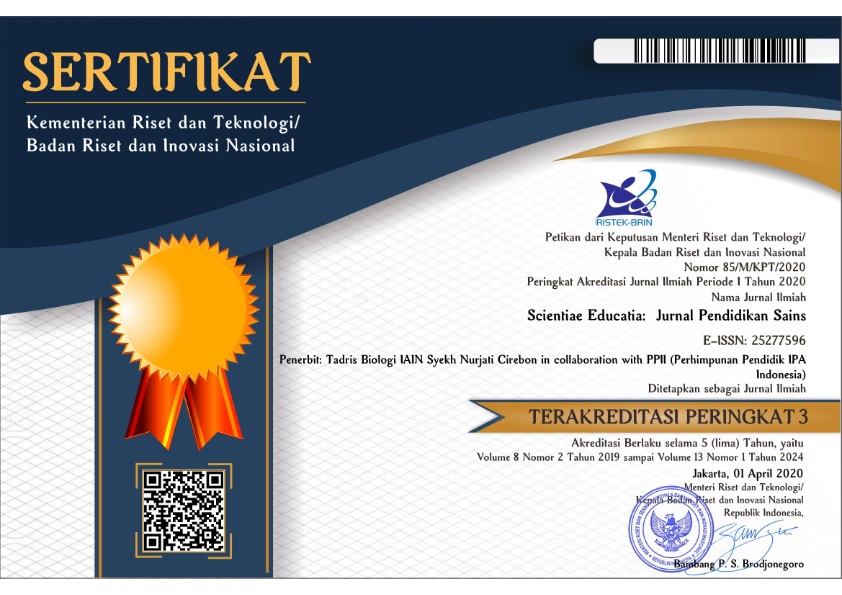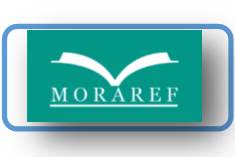Determination Of Acoustic Properties Of Rice Bran Composites A Material Handler Noise
(1) Institut Teknologi Padang
(*) Corresponding Author
Abstract
The examination of the acoustic characteristic of rice bran has been performed. The materials are the alternative materials of the noise controllerfrom the use of synthetic fiber materials like glasswool. The examination is completed by using tube impedance method. The result of the examination reveals that the natural fiber materials that have been mixed with glue have a good value of sound absorption at frequency 400-1200 Hz whereas at frequency 200 Hz, its value does not change significantly. The high value of the sound absorption is owned by materials with the bigger porous. Beside the coefficient of the absorbtion, the examination of value of acoustic impendence is also performed. The result shows that the similar composition between natural fiber and glue has a bigger value of impendence compared to the lower composition of glue. It is caused by the fulfillment of the bigger amount of the porous by glue.
Keywords
Full Text:
PDFReferences
Asdrubali, F. (2006). Survey on the acoustical properties of new sustainable materials for noise control: Proceedings of Euronoise (Vol. 30). Tampere: European Acoustics Association. Available online: http://www.ciriaf.it/ft/File/Pubblicazioni/pdf/1279.pdf
Asim, M., Abdan, K., Jawaid, M., Nasir, M., Dashtizadeh, Z., Ishak, M. R., & Hoque, M. E. (2015). A review on pineapple leaves fibre and its composites. International Journal of Polymer Science, 1, 1-16. DOI: 10.1155/2015/950567
Bahri, S., Manik, T., & Suryajaya. (2016). Pengukuran sifat akustik material dengan metode tabung impedansi berbasis platform arduino. Jurnal Fisika FLUX, 13(2), 148-154. Available online: https://ppjp.ulm.ac.id/journal/index.php/f/article/download/3460/3005
Berardi, U., & Iannace, G. (2015). Acoustic characterization of natural fibers for sound absorption applications. Building and Environment, 94, 840–852. DOI: 10.1016/j.buildenv.2015.05.029
Berardi, U., & Iannace, G. (2017). Predicting the sound absorption of natural materials: Best-fit inverse laws for the acoustic impedance and the propagation constant. Applied Acoustics, 115, 131–138. DOI: 10.1016/j.apacoust.2016.08.012
Bin Bakri, M. K., Jayamani, E., Heng, S. K., Hamdan, S., & Kakar, A. (2017). An Experimental and Simulation Studies on Sound Absorption Coefficients of Banana Fibers and their Reinforced Composites. In Nano Hybrids and Composites: Trans Tech Publ. DOI: 10.4028/www.scientific.net/NHC.12.9
Dewi, A. K., & Elvaswer. (2015). Material akustik serat pelepah pisang (musa acuminax balbasiana calla) sebagai pengendali polusi bunyi. Jurnal Fisika Unand, 4(1), 78-82. Available online: http://jfu.fmipa.unand.ac.id/index.php/jfu/article/download/129/110
Doelle, L. L., & Prasetyo, L. (1993). Akustik Lingkungan. Erlangga: Jakarta.
Doost-hoseini, K., Taghiyari, H. R., & Elyasi, A. (2014). Correlation between sound absorption coefficients with physical and mechanical properties of insulation boards made from sugar cane bagasse. Composites Part B: Engineering, 58, 10–15. Available online: DOI: 10.1016/j.compositesb.2013.10.011
Fouladi, M. H., Nor, M. J. M., Ayub, M., & Leman, Z. A. (2010). Utilization of coir fiber in multilayer acoustic absorption panel. Applied Acoustics, 71(3), 241–249. DOI: 10.1016/j.apacoust.2009.09.003
Hansen, C. (2014). Noise control: from concept to application. CRC Press.
Jayamani, E., Hamdan, S., Ezhumalai, P., & Bakri, M. K. B. (2016). Investigation on dielectric and sound absorption properties of banana fibers reinforced epoxy composites. Jurnal Teknologi, 78(6–10), 97–103. Available online: https://jurnalteknologi.utm.my/index.php/jurnalteknologi/article/download/9195/5483
Kartikaratri, Y., M., Agus, S., & Hendri, W. (2012). Pembuatan Komposit Serat Serabut Kelapa Dan Resin Fenol Formadehide sebagai Material Peredam Akustik. Jurnal Berkala Fisika, 15(3): 87-90. Available online: https://ejournal.undip.ac.id/index.php/berkala_fisika/article/viewFile/4989/4522
Khan, G. M. A., Yilmaz, N. D., & Yilmaz, K. (2017). Okra Bast Fiber as Potential Reinforcement Element of Biocomposites: Can It Be the Flax of the Future? Handbook of Composites from Renewable Materials, Functionalization, 4, 379.
Kim, B.-S., Cho, S.-J., Min, D.-K., & Park, J. (2015). Sound absorption structure in helical shapes made using fibrous paper. Composite Structures, 134, 90–94. DOI: 10.1016/j.compstruct.2015.08.039
Koizumi, T., Tsujiuchi, N., & Adachi, A. (2002). The Development of Sound Absorbing Material Using Natural Bambu Fiber. WIT Transactions on The Built Environment, 59(4):157-166. Available online: https://www.witpress.com/Secure/elibrary/papers/HPS02/HPS02016FU.pdf
Mahzan, S., Zaidi, A. M. A, Arsat, N., Hatta, N. M. M., Ghazali, M. I., & Mohideen, S, R. (2010). Study on sound absorption properties of coconut coir fibre reinforced composite with added recycled rubber. International Journal of Integrated Engineering, 2(1), 29–34. Available online: http://eprints.uthm.edu.my/620/1/ijiev22010p5.pdf
Mueller, D. H., & Krobjilowski, A. (2003). New discovery in the properties of composites reinforced with natural fibers. Journal of Industrial Textiles, 33(2), 111–130. DOI: 10.1177/152808303039248
Nor, M. J. M., Jamaludin, N., & Tamiri, F. M. (2004). A preliminary study of sound absorption using multi-layer coconut coir fibers. Electronic Journal Technical Acoustics, 3, 1–8. Available online: http://ejta.org/archive/articles2004/tamiri1.zip
Ridhola, F., & Elvaswer. (2015). Pengukuran Koefisien Absorbsi Material Akustik dari Serat Alam Ampas Tebu Sebagai Pengendali Kebisingan. Jurnal Ilmu Fisika, 7(1), 1-6. DOI: 10.25077/jif.7.1.1-6.2015
Rizal, A., Elvaswer, & Fitri, Y. (2015). Karakteristik Absorbsi dan Impedansi Material Akustik Serat Alam Ampas Tahu (Glycine Max) Menggunakan Metode Tabung. Jurnal Ilmu Fisika, 7(1), 14-18. DOI: 10.25077/jif.7.1.14-18.2015
Rozli, Z., & Zulkarnain, Z. (2010). Noise control using coconut coir fiber sound absorber with porous layer backing and perforated panel. American Journal of Applied Sciences, 7(2), 260-264. Available online: http://eprints.unsri.ac.id/5245/1/Applied_Science_lengkap.pdf
Russell, D. A. (1999). Absorption Coefficients and Impedance. Science and Mathematics Department. GMI Engineering & Management Institute Flint, MI, 48504.
Sabri, S. (2005). Evaluasi Kinerja Akustik Serat Alam Sebagai Material Alternatif Pengendali Kebisingan. [Thesis]. Bandung: Institut Teknologi Bandung.
Samsudin, E. M., Ismail, L. H., & Kadir, A. A. (2016). A Review On Physical Factors Influencing Absorption Performance Offibrous Sound Absorption Material From Natural Fibers. Arpn Journal of Engineering and Applied Sciences, 11(6), 3703–3711. Available online: http://www.arpnjournals.org/jeas/research_papers/rp_2016/jeas_0316_3867.pdf
Santulli, C., Sarasini, F., Fortunati, E., Puglia, D., & Kenny, J. M. (2014). Okra Fibres as Potential Reinforcement in Biocomposites, In Biomass and Bioenergy (pp. 175–190). Springer.
Suhada, K. (2010). Kajian koefisien absorpsi bunyi dari material komposit serat gergajian batang sawit dan gypsum sebagai material penyerap suara menggunakan metode impedance tube. [Thesis]. Sumatera Utara: Universitas Sumatera Utara.
Tholkappiyan, E., Saravanan, D., Jagasthitha, R., Angeswari, T., & Surya, V. T. (2016). Prediction of acoustic performance of banana fiber-reinforced recycled paper pulp composites. Journal of Industrial Textiles, 45(6), 1350–1363. DOI: 10.1177/1528083714559569
Tomyangkul, S., Pongmuksuwan, P., Harnnarongchai, W., &
Chaochanchaikul, K. (2016). Enhancing sound absorption properties of open-cell natural rubber foams with treated bagasse and oil palm fibers. Journal of Reinforced Plastics and Composites, 35(8), 688–697. DOI: 10.1177/0731684415627295
Trindade, W. G., Hoareau, W., Megiatto, J. D., Razera, I. A. T., Castellan, A., & Frollini, E. (2005). Thermoset phenolic matrices reinforced with unmodified and surface-grafted furfuryl alcohol sugar cane bagasse and curaua fibers: properties of fibers and composites. Biomacromolecules, 6(5), 2485–2496. DOI: 10.1021/bm058006+
Wijaya, I., & Elvaswer. (2015). Pengujian Koefisien Absorbsi dari Material Akustik Serat Alam Limbah Ampas Tempe untuk Pengendali Kebisingan. Jurnal Fisika Unand, 4(2), 103-105. Available online: http://jfu.fmipa.unand.ac.id/index.php/jfu/article/ view/133/114.
Wirajaya, A. (2007). Karekteristik komposit sandwich serat alami sebagai absorber bunyi. [Thesis]. Bandung: Institut Teknologi Bandung.
Zheng, Y., Wang, J., Zhu, Y., & Wang, A. (2015). Research and application of kapok fiber as an absorbing material: A mini review. Journal of Environmental Sciences, 27, 21–32. DOI: 10.1016/j.jes.2014.09.026
Zulkifli, R., Nor, M. J. M., Tahir, M. F. M., Ismail, A. R., & Nuawi, M. Z. (2008). Acoustic properties of multi-layer coir fibres sound absorption panel. Journal of Applied Sciences, 8(20), Available online: 3709–3714. https://www.researchgate.net/profile/Rozli_Zulkifli/publication/46029516_Acoustic_Properties_of_Multi-Layer_Coir_Fibres_Sound_Absorption_Panel/links/5582cb0708aeab1e46685657/Acoustic-Properties-of-Multi-Layer-Coir-Fibres-Sound-Absorption-Panel.pdf
DOI: 10.24235/sc.educatia.v7i1.2517
Article Metrics
Abstract view : 848 timesPDF - 303 times
Refbacks
- There are currently no refbacks.
Scientiae Educatia: Jurnal Pendidikan Sains indexed by:

This work is licensed under a Creative Commons Attribution 4.0 International License.



1.png)












